Ronda's Puente Nuevo
May 31, 2017
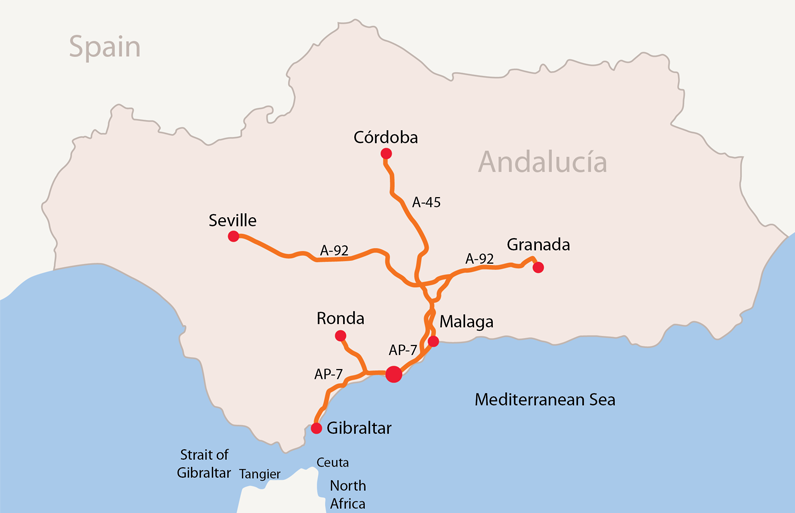
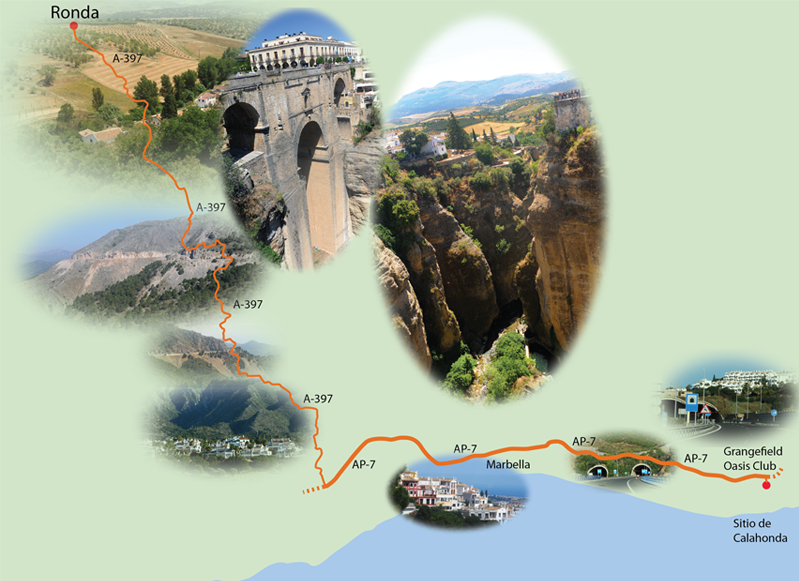
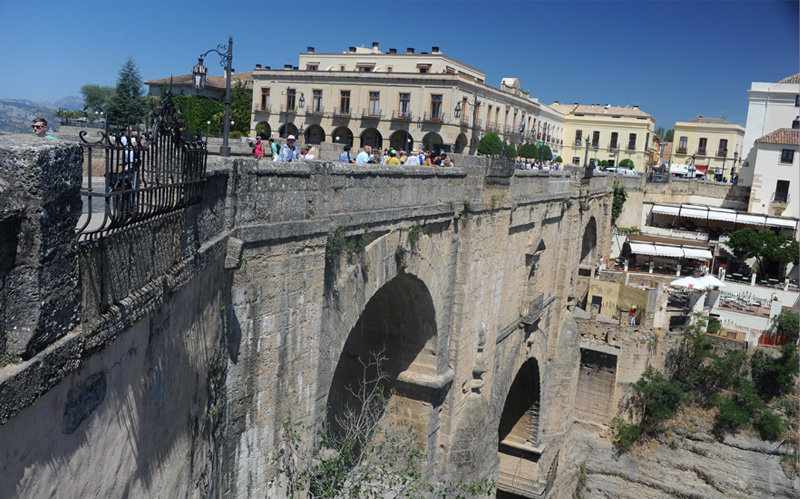
The most famous feature of Ronda is the stone bridge built across the deep gorge that separates the old town of Ronda from the newer commercial district. Brenda is close to the near end of the bridge with her pink hat. The gorge, or El Tajo, is about 330 ft deep. Building this stone bridge across it in the late 18th century was quite an engineering feat. It is called Puente Nuevo or "New Bridge" from the time it was built because before that, there was just the essentially unpassable gorge. That along with the Alcazaba fortress and city wall from the other end of the city made Ronda essentially unassailable.
We had now completed our road to Ronda and spent time here at the Puente Nuevo. Much of the beauty of the area is in the views to the surrounding countryside. Brenda is standing at the end of the high viewpoint at the level of the bridge. Behind her is the deep gorge. | 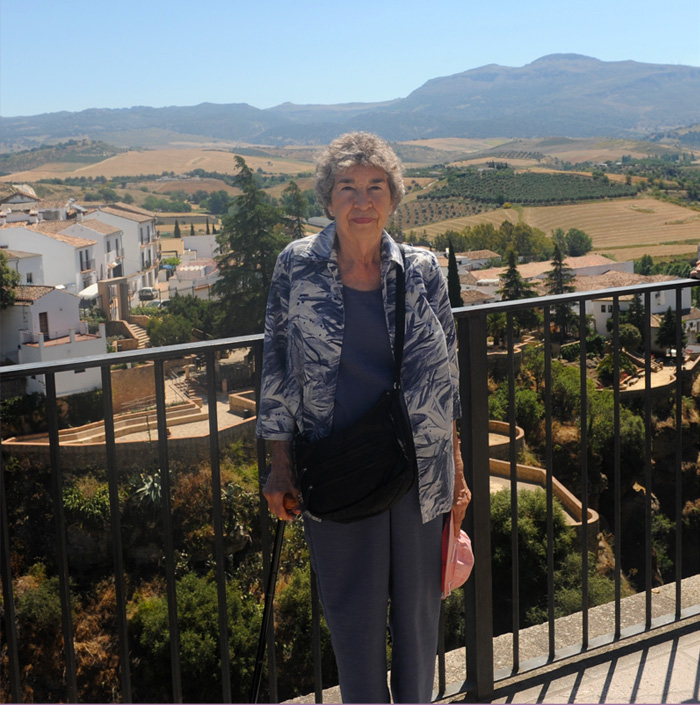 |
 | Brenda and Chris take a break on a stone bench at the edge of the gorge. The strong protective wrought iron and the stone bench may themselves be hundreds of years old. Everything here makes you think about history. |
We spent time just looking at this extraordinary gorge and it's surroundings, so this will just be a collection of different views of El Tajo.
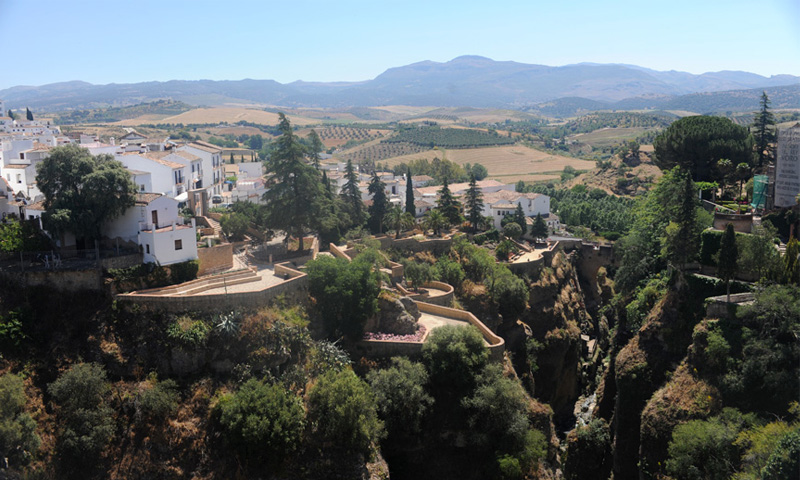
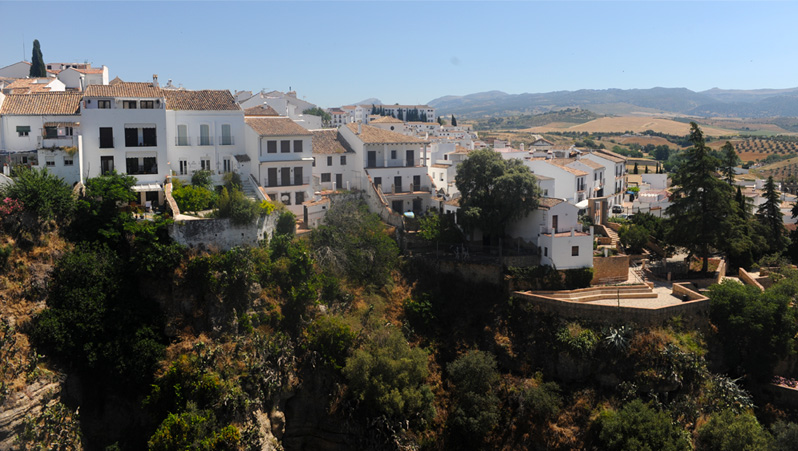
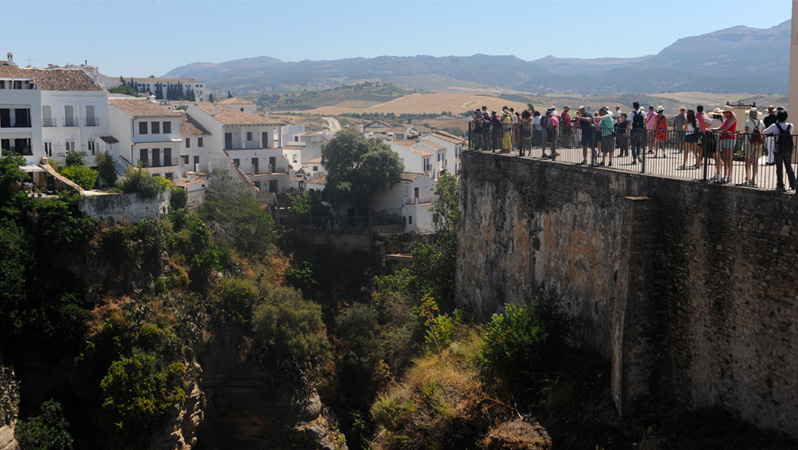
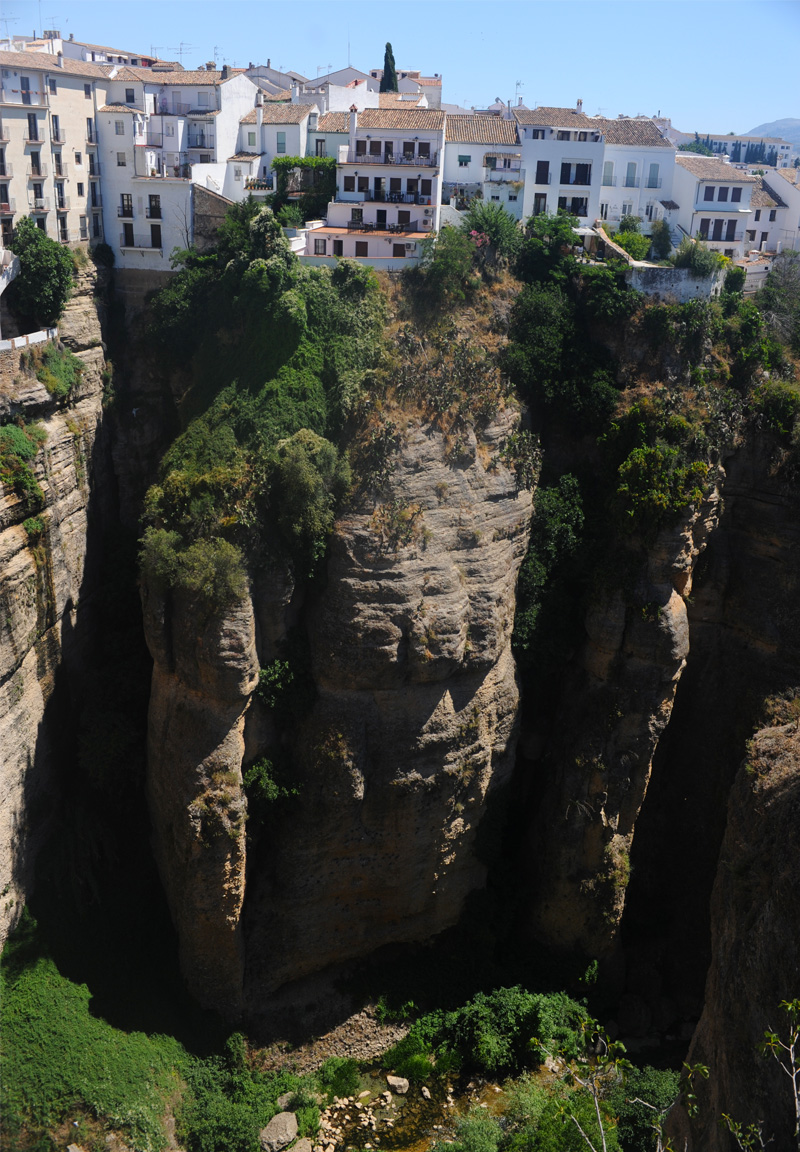
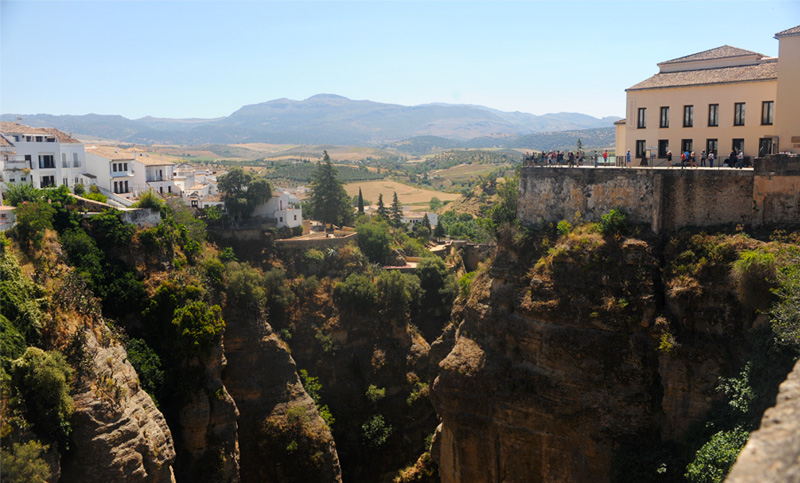
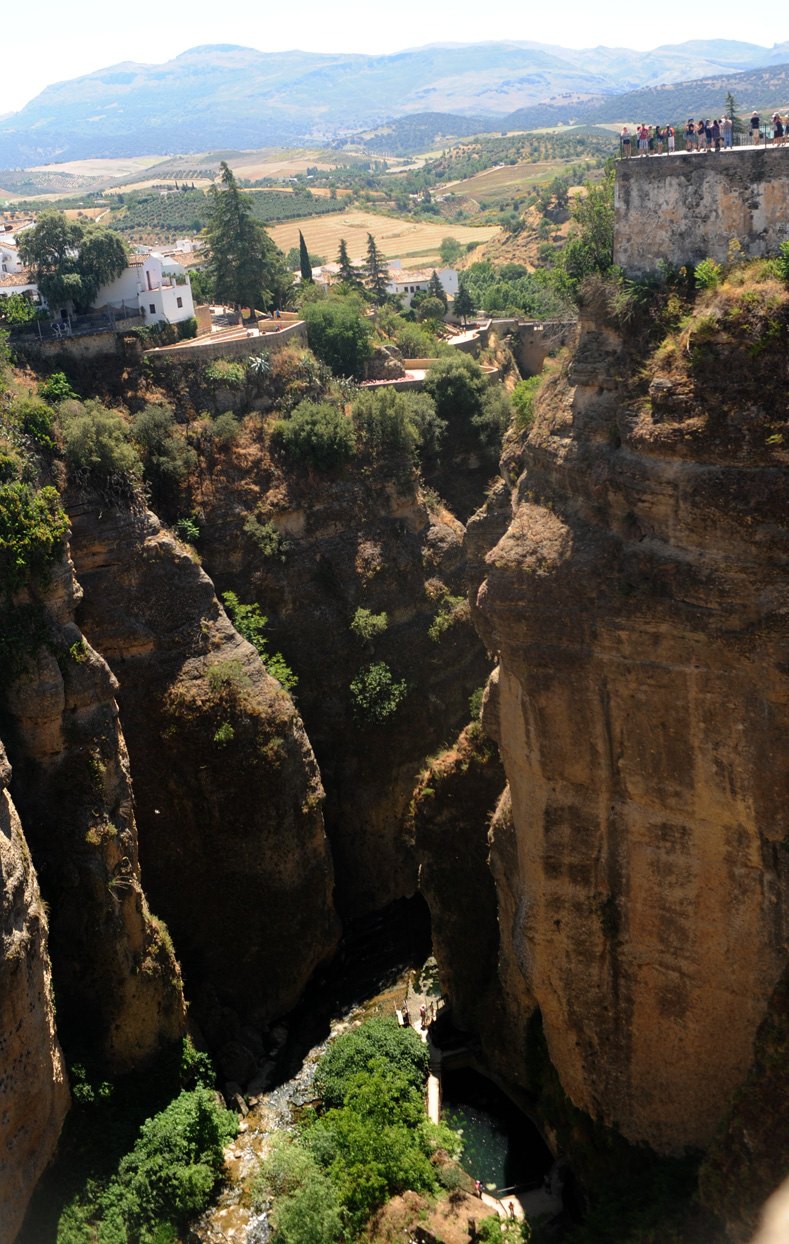
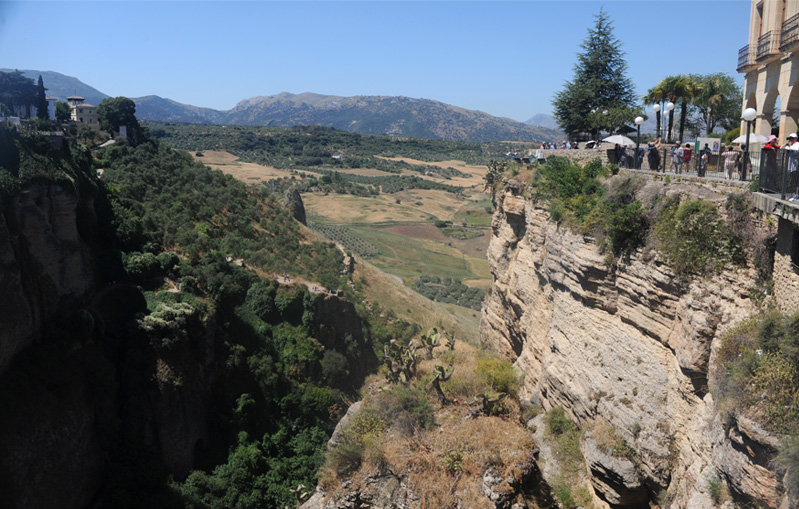
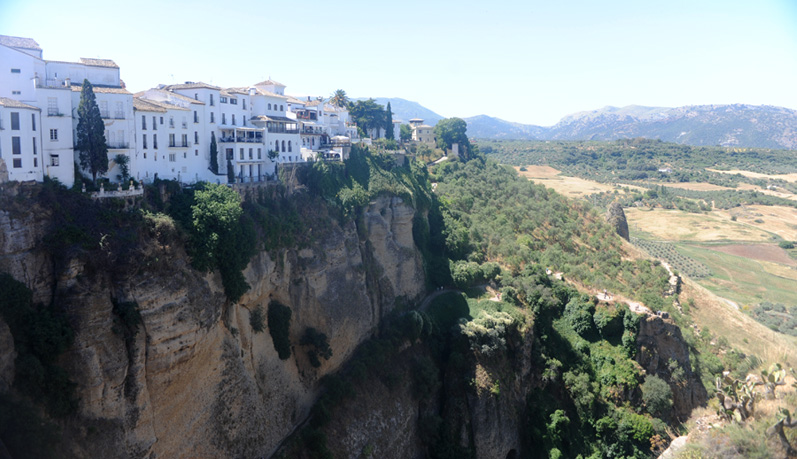
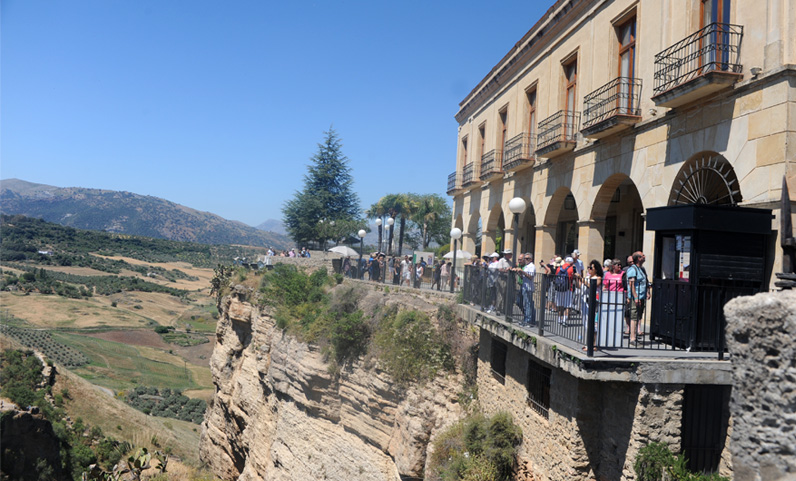
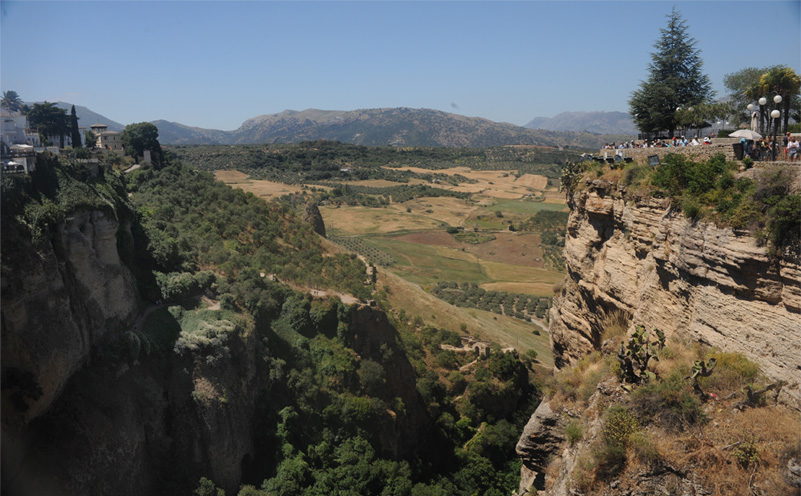
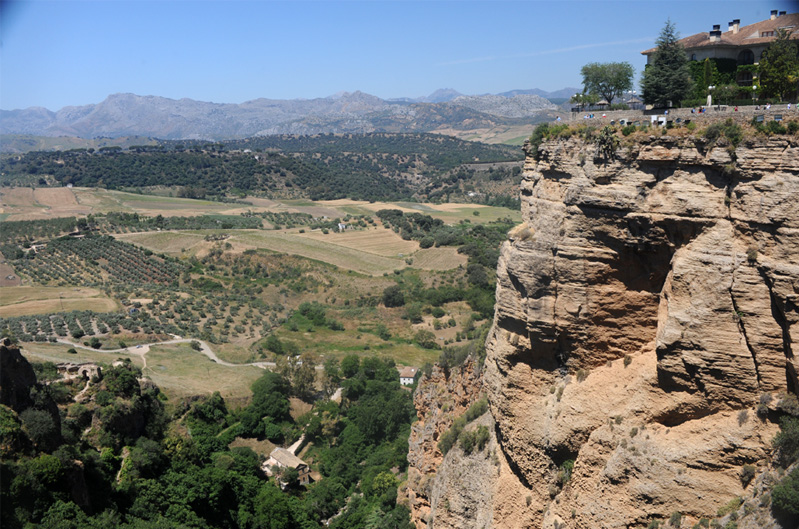
At about 1pm we started our walk back through La Ciudad toward where we had parked, a walk of about a mile. We spent some time for Brenda and Chris to look at the shops. I was more interested in people watching.
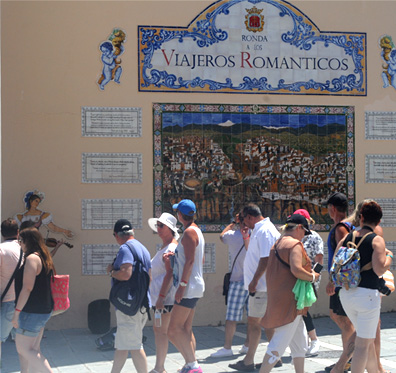 |  |
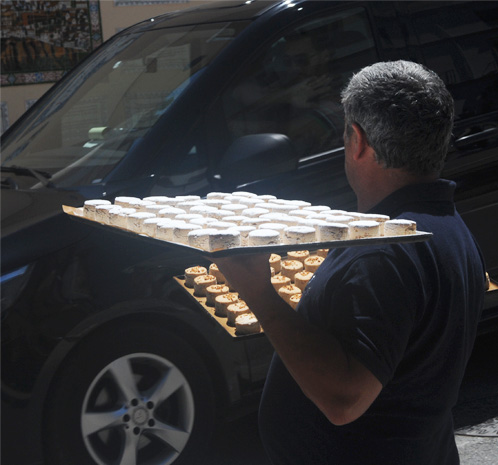 | I actually enjoyed more watching the working people who were delivering things to the shops. I was rooting for this guy to get across the street with the cars and foot traffic, doing his delicate balancing act with these trays of cakes. 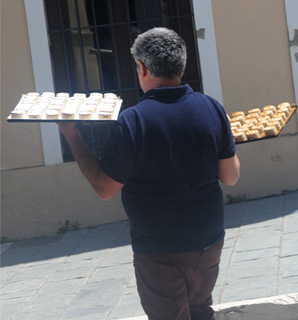 |
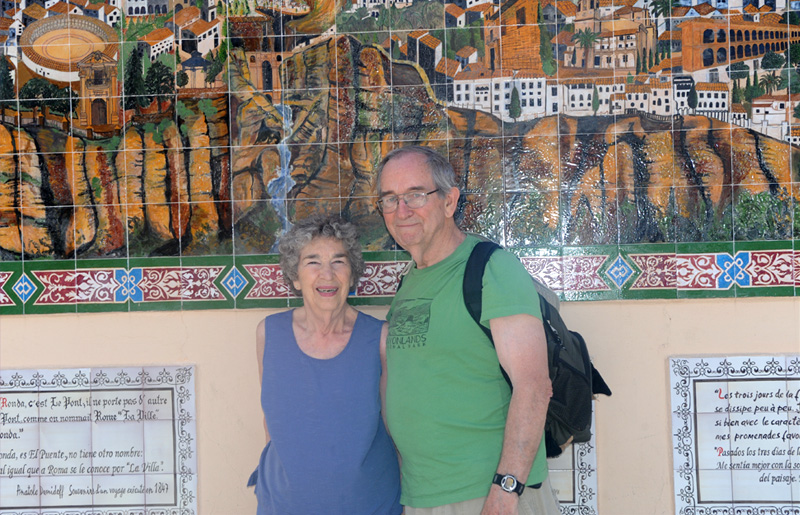
Chris took this photo of Brenda and Rod by the tile mural along the center street of the old town in Ronda. It is titled "Ronda a los Viajeros Romanticos" or " Ronda to the Romantic Travelers". It was crowded each time we passed by it with couples and families having their pictures taken there. | 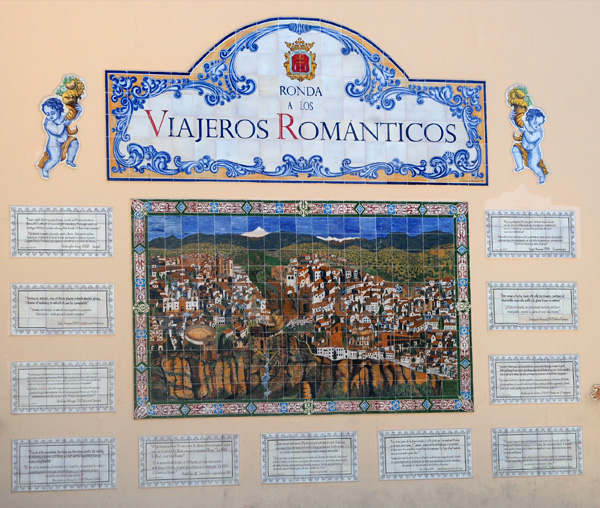 |
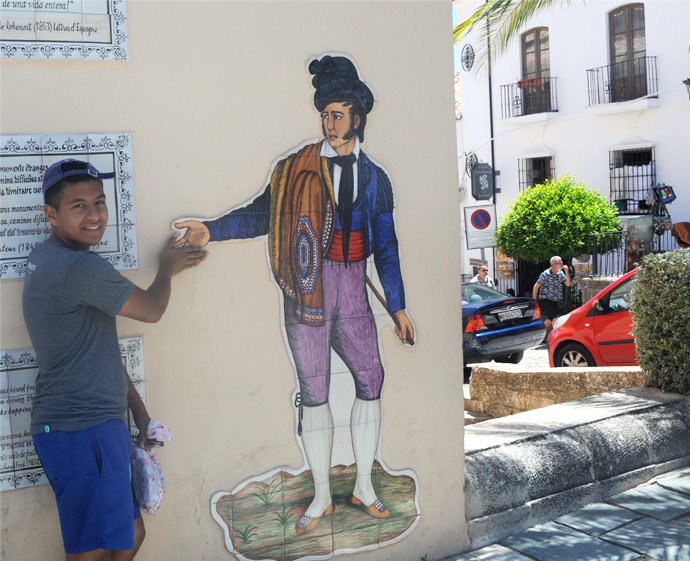 | Chris with the mural traveler. It was a good time to just relax along the street. We stopped at an Armenian restaurant and had some lunch. Chris helped with translation and enjoyed talking with the waiters. If he had any difficulty with the Castellano Spanish, it was not evident to us. |
When we started walking back through the old town on Calle Armenian, the crowd quickly diminished. Not surprising since the Puente Nuevo area is the main tourist attraction. Even though these buildings may date back to 1000AD, they are mostly well preserved. | 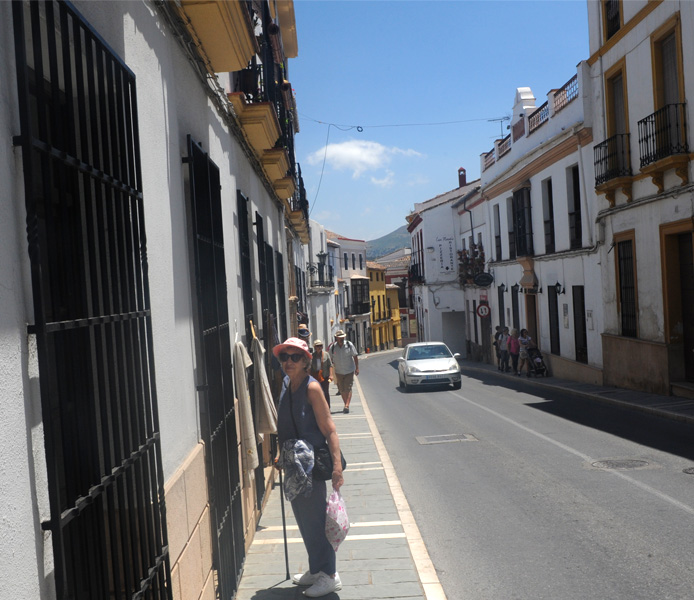 |
 | Hanging flower pots on the walls was a Spanish tradition, even on the walls of an Italian restaurant. Brenda liked that tradition. This old electrical engineer was always noting their alternative to electric utility poles - just attaching all the wires to the sides of the houses. |
We are now on the downhill path back to our car. I liked this perspective of the Iglesia de Espiritu Santo. | 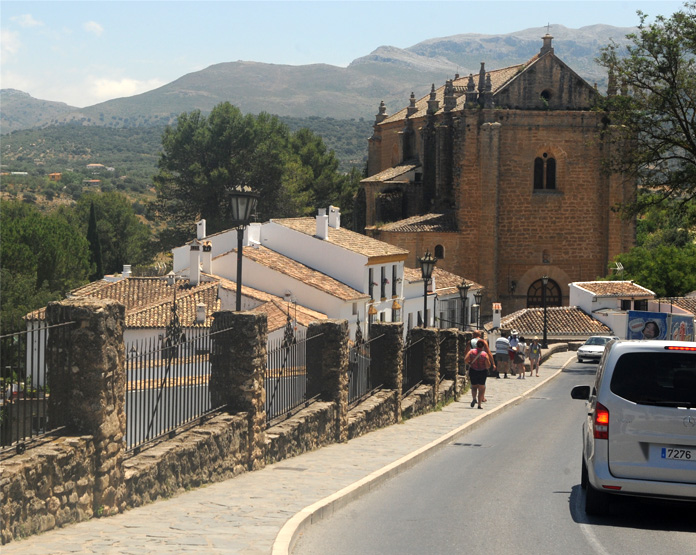 |
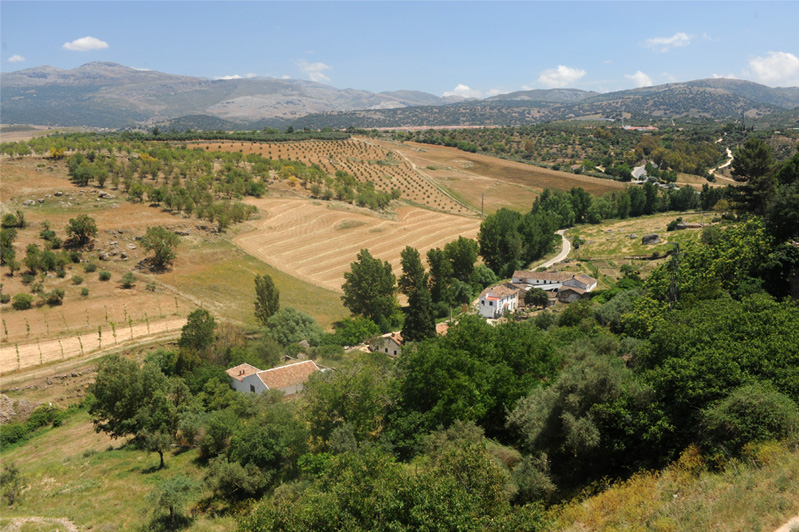
I loved this view of the farmland as we went down that slope toward the church. In the distance on the left are the mountains that we will be going back over on our return trip.
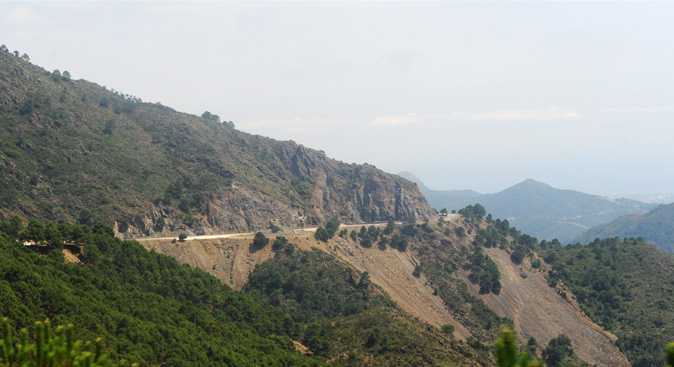 | We set Brenda's gps on our home base in Calahonda and let it guide us back through Ronda to the A-397. If we had known, we could have turned right at the roundabout and cut off a few miles, but at least we were out on the mountain road to the coast without too much loss of time. |
We are back to the place where we are looking down the last stretch of winding road leading to the sea. | 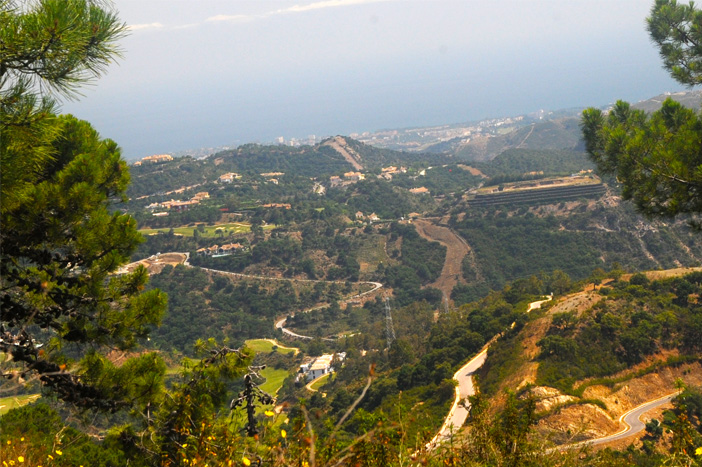 |
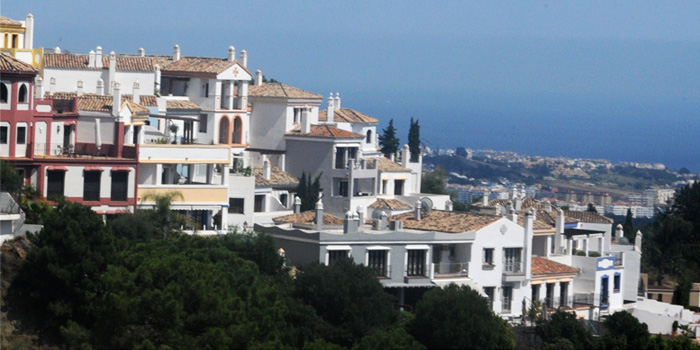 | We are now back down to the area of dense coastal population near Marbella. There we join the AP-7 for the short run up the coast to Club Marbella. |
| Moving to Club Marbella |
2017